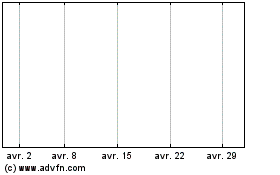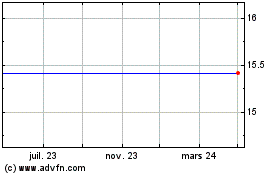By Mike Colias and Nora Naughton
The U.S. auto industry, hobbled this spring by the Covid-19
crisis, has bounced back stronger and faster than many expected
with some companies reporting record profits in the third
quarter.
Even for an industry accustomed to boom-and-bust cycles, the
speed of the auto sector's recovery from the pandemic-related
shutdowns last spring has surprised executives and analysts, who
just six months ago were calculating how many months companies
could survive.
The pace of new-vehicle sales over the past few months has
rebounded to the strong levels seen before the crisis, despite slim
pickings on dealer lots because of tight inventory.
Car buyers are paying record prices for new wheels, with dealers
citing strong demand for luxury vehicles and high-end pickup
trucks.
Fiat Chrysler Automobiles NV on Wednesday reported record
operating profits of $2.7 billion for the third-quarter. The
results handily beat analysts' expectations and marked a stark
improvement from the second quarter, when the company posted a net
loss of $1.2 billion.
Ford Motor Co. also delivered a strong quarter, reporting net
income of about $2.4 billion and a global pretax profit margin of
9.7% -- its highest mark in five years.
GM reports third-quarter results Nov. 5. Analysts expect the
company's bottom line to bounce back to pre-pandemic levels.
Still, a rising numbers of coronavirus infections in Europe and
concerns about the possibility of factory closures weighed on Fiat
Chrysler's shares Wednesday and those of other European auto
companies, said Jefferies analyst Philippe Houchois.
"I think the concern is over a second wave," he said.
Fiat Chrysler's shares fell 2%, less than the broader market's
steep drop. Volkswagen AG shares fell about 5% and shares of French
auto maker Renault SA fell 8%.
Covid-19 cases also are rising in the Rust Belt states of
Michigan and Ohio, where much of the industry's factory network is
concentrated.
The auto sector's earnings rebound underscores the bifurcated
impact that the pandemic has had across industries. While travel,
energy, commercial real estate and other sectors have seen demand
wilt, makers of consumer goods, from cars to washing machines, are
scrambling to meet demand.
It is a stark reversal from this spring, when car executives
took drastic measures to conserve cash, uncertain how long their
factories would sit idle.
Ford and GM burned through billions of dollars in cash in the
second-quarter as revenue dried up, and each added more than $20
billion in debt to cushion themselves against further losses.
The third-quarter, however, marked a big turnaround for Ford,
which breezed past analysts' forecasts by posting a $3.6 billion
pretax profit, excluding one-time items. That amounted to 65 cents
per share, better than the average analyst forecast of 20 cents,
according to FactSet.
Fiat Chrysler also said it doesn't expect any further
disruptions from the Covid-19 pandemic this year and reinstated its
full-year guidance after suspending it in the spring. It now
expects to earn between $3.5 billion and $4.1 billion on an
operating basis in 2020.
Research firm IHS Markit now forecasts North American production
of 13 million vehicles, up from a forecast of 12.2 million it made
in April. The firm raised its global projection to 73 million
vehicles, from 69.3 million.
Industry executives, dealers and analysts cite several reasons
for the faster-than-expected snapback. Interest rates are near
record lows, which have allowed car companies to promote
zero-interest financing, and government stimulus spending has
helped some buyers afford new rides, dealers say.
Dealers also point to pandemic-driven shifts in how consumers
are spending their money. Many people are hunkered down and
spending less on things like dining out and vacations, are willing
to splurge more on their vehicles and fixing up their homes,
industry executives say.
"What's happening here is a reorientation and prioritization of
the household budget," said Mike Jackson, chief executive for
AutoNation Inc., the U.S.'s largest publicly traded dealership
chain, on an earnings call last week. In the third quarter, the
company said adjusted earnings-per-share from continuing operations
hit a record of $2.38.
Lithia Motors Inc., an Oregon-based operator of about 200
dealerships selling everything from Mazdas to BMWs, saw the average
price paid for a new vehicle in the third quarter jump by $2,500 on
a same-store basis, to $40,100.
"Their checkbooks are probably fuller," Lithia Chief Executive
Bryan DeBoer said last week. "They're not able to fly to travel.
They're driving to travel."
Auto makers spent much of a nearly two-month shutdown period
last spring laying out safety protocols, including mask wearing and
rigorous testing, that so far has prevented factory outbreaks.
But intermittent supply shortages and higher-than-normal
worker-absence rates have served as a persistent reminder of the
threat of production disruptions from the virus.
For now, most auto plants are working at full throttle to meet
high levels of demand that few pundits expected last spring. Auto
makers built 4.1 million vehicles in North America during the third
quarter, matching the output level from a year earlier.
At General Motors Co.'s plant in Flint, Mich., where its largest
pickup trucks are made, employees have been working around the
clock six days a week -- and occasionally on Sundays -- to restore
depleted dealers stocks.
GM even has scheduled voluntary work shifts for extra pay on
Tuesday, Election Day, which is a holiday under its contract with
the United Auto Workers Union.
"The startup was slow with everyone getting accustomed to
wearing masks and the new safety protocols, but everybody is kind
of used to the new norm," said Chad Fabbro, an official at UAW
Local 598, which represents about 5,000 workers in Flint. "We're
cranking now."
This summer, Marybeth Morris gave up trying to find a Kia
Telluride because the SUV was in such short supply. Instead, she
settled on a Volkswagen Atlas, and even then, the first one she
picked out was sold out from under her. A salesperson found a
different model at another dealership and Ms. Morris placed her
order.
"This was more complicated than any previous car buying
experience," she said.
Write to Mike Colias at Mike.Colias@wsj.com
(END) Dow Jones Newswires
October 28, 2020 17:31 ET (21:31 GMT)
Copyright (c) 2020 Dow Jones & Company, Inc.
Stellantis NV (BIT:STLA)
Graphique Historique de l'Action
De Mar 2024 à Avr 2024

Stellantis NV (BIT:STLA)
Graphique Historique de l'Action
De Avr 2023 à Avr 2024
